Here they are – the first three coping strategies for you to experiment with and, hopefully, add to your personal coping kit! If you haven’t already, I’d really encourage you to read the introduction to this series. It explains how and why coping strategies work, who they’re for and who they might not be for, what they can and can’t do, and why the science behind them matters.
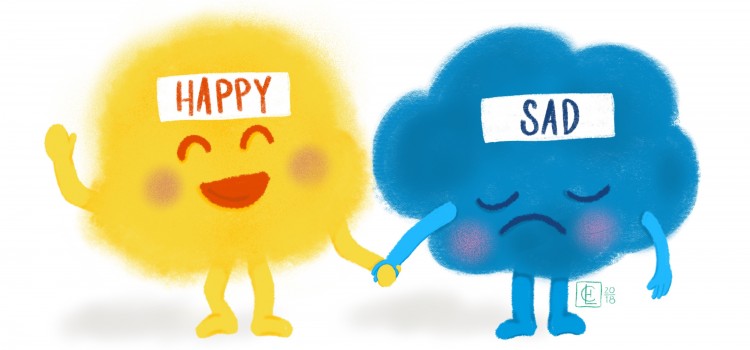
Coping Strategy 1: Name it to Tame it – the power of labelling our feelings
Brain is back! (Did anyone else read that like an Eminem lyric?!) Brain operates best when all its parts work together – from top to bottom and left to right. If you read our last Brain post you might remember that when we feel unsafe or stressed our amygdala sounds the alarm and Brain leaps into superhero mode ready to do whatever it takes to keep us alive. This means shutting down some parts of our bodies and brains that aren’t immediately necessary. One way to help stop our amygdala sounding the alarm quite so readily is to put a name to what you’re feeling. (1, 2) This helps parts of the brain that might not be communicating so well in a crisis or when we’re stressed – in this case the language department with the emotions department – to start talking to each other again. (This post explains this in more detail)
You could just put a word to your emotion or you can tell the whole story… “This happened and it made me feel ______ so then I _________ and then ______ happened.” {Insert your experiences and feelings and actions as appropriate}! Dan Siegel and Tina Payne Bryson encourage parents to help children tell the story after a difficult or painful experience as an effective way of supporting them through processing the event. This could be something small like falling over or something big like being in an accident. It works for adults, too!
Experiment with:
Over a period of a few days or a week, try to notice when you’re feeling big feelings. If you can, pause for a minute to see if you can give that feeling a name.
Once you’ve named your feeling, or even if you haven’t, give yourself time to really feel it.
Pay attention to your body.
Where and how is that feeling showing up? What sensations is it causing in your body? If you could draw it, what would it look like?
If you couldn’t name your feeling earlier, can you find a word that fits now?
Being aware of our feelings, and the sensations that go with them, helps us when it comes to deciding how we’re going to act on them. In Protective Behaviours work we sum up the above very simply: Stop. Feel. Think. Do!
Coping Strategy 2: Let nature nurture – the healing power of green spaces
Spending time in nature has been connected to multiple health benefits and women living in areas with higher concentrations of green spaces have even been found to have lower mortality rates than peers in more urbanised areas – in other words they’re more likely to live longer! The Japanese practice of Shirin Yoku or forest bathing has been associated with lots of physiological changes in the body that are consistent with lowered stress. So there are lots of reasons to get outside and find a patch of green. But what if you can’t go outside or don’t have any green spaces near your home?!
I have good news for you! It seems that just looking at images of nature and green spaces promotes activity in your Parasympathetic Nervous System (PNS). You can think of your PNS as your body’s brake – it kicks in to help you relax and slow down. It actually briefly goes into action every time you breathe out. We also have an accelerator, the Sympathetic Nervous System (SNS). Both have important roles to play but when it comes to feeling calmer and less stressed we want to focus on activating the PNS and putting that brake on.
Inmates in a US prison were regularly shown nature videos over the period of a year. They were involved in 26% fewer violent incidents than inmates who didn’t watch the videos and reported feeling calmer, more empathetic and less irritable. Prison guards’ reports were also consistent with the inmates’ reports. So it seems even virtual green is good for us. This is a great reason to take advantage of any online tours of parks and forests!
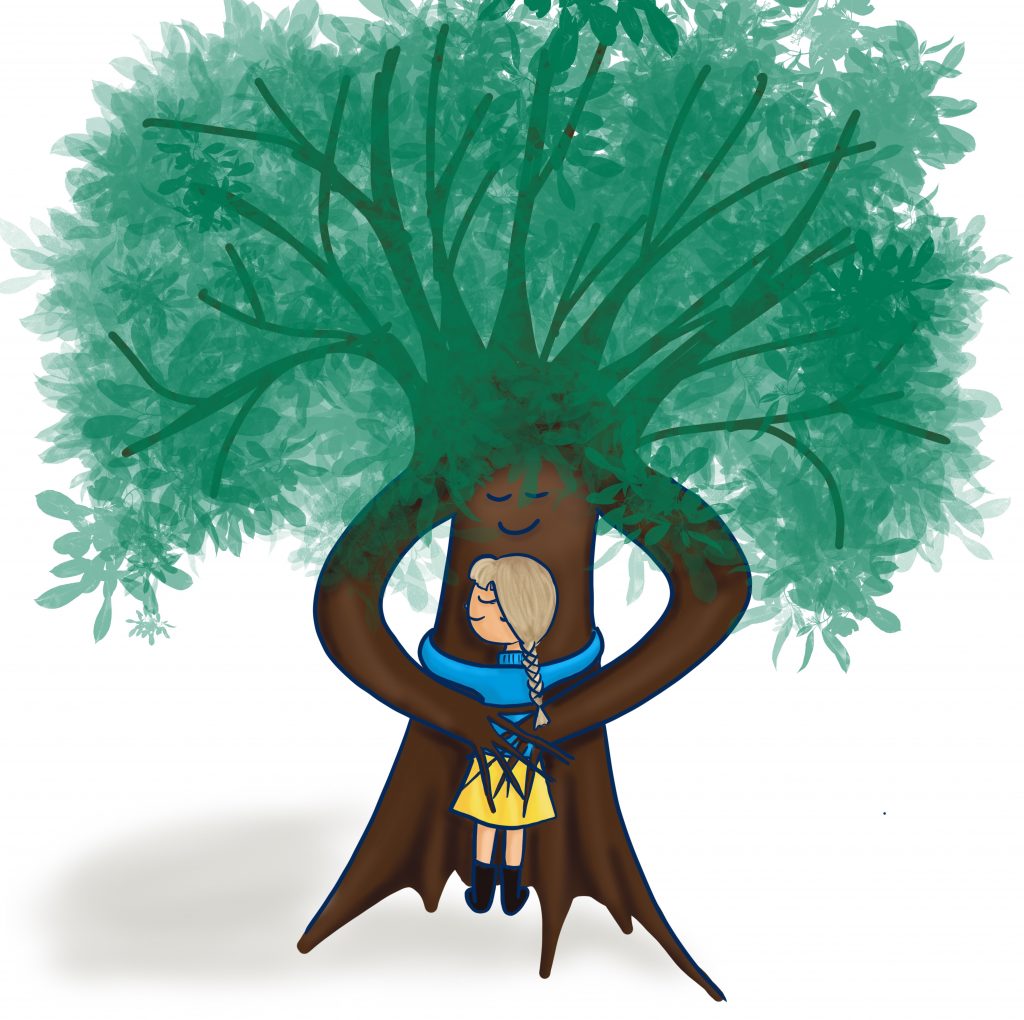
However, if you have the opportunity to head outside to a green space you should take it because the real thing has the strongest stress busting power. So get up off that sofa if you can!
Recent research conducted at the University of Sussex in the UK also suggests that listening to sounds of nature activates Brain’s default mode, a mode which is activated during rest. There were other physiological benefits too. This is particularly effective for those who are feeling stressed. Intriguingly, for people who were already feeling calm and relaxed the natural sounds showed a slight increase in stress! Sometimes research can throw up some unexpected results. This just means there’s more work to be done and more to discover – science is an ever evolving process.
As an added bonus, time spent in the natural world can also make you more generous and feel less entitled (3, 4). And all this talk of nature’s benefits is leaving me feeling pretty good so I thought we’d give you a little gift so you can always be sure to have some nature in your pocket.
At the end of the post you’ll find instructions for how to download two little zines (short for magazine and refers to a little, self published booklet) – one has big picture landscape photos and the other has up close images of nature’s amazing detail. There’s a printable version and a digital option. Let us know if you use them – we’d love to know which photos are your favourites. A big shout out to Daniel Sward Photography and Robert Lance for generously allowing us to use their photos in this post and in the zines. Here’s a little taster of what you’ll find.

Experiment with:
So whether you’re outside, surrounded by greenery, looking out your window, taking a virtual tour of a park or forest, or simply looking at the photos in your little zines, take your time.
Linger in the moment. What details do you notice? Look for patterns, colours, anything that stands out. What appeals to you? What makes you curious? What are you feeling as you look (and listen, smell, taste and feel if you’re outside)?
Let yourself rest in nature’s amazing ability to nurture.
Coping Strategy 3: Balance the Bias – practising gratitude and searching for joy *
Back to Brain again. You might remember from my post on feeling and being safe, that Brain has only one job. To keep you safe and alive. Brain is always busy scanning our environments for threat, ready to leap into life saving action at a moment’s notice if required. This means Brain pays a whole lot more attention to negative things than it does to positive because whilst good things are great, they won’t kill us! Sometimes Brain is so busy doing his job keeping us alive that he needs a little help, a little prompt to focus on the positive. Thankfully, it doesn’t take too much effort on our part to help make this happen!
Brain’s negativity bias is really important to remember in times of disaster and danger – like right now in the midst of the COVID-19 pandemic – and also for those people working in jobs that regularly expose them to the darker side of life. Think police, paramedics, social workers, and those caring for vulnerable children and trauma survivors. If you fit into this category, your world will be skewed towards the negative and your brain’s bias in this direction will compound things so it’s extra important to put strategies in place to balance the bias and bring some positivity and joy to the forefront of your world.
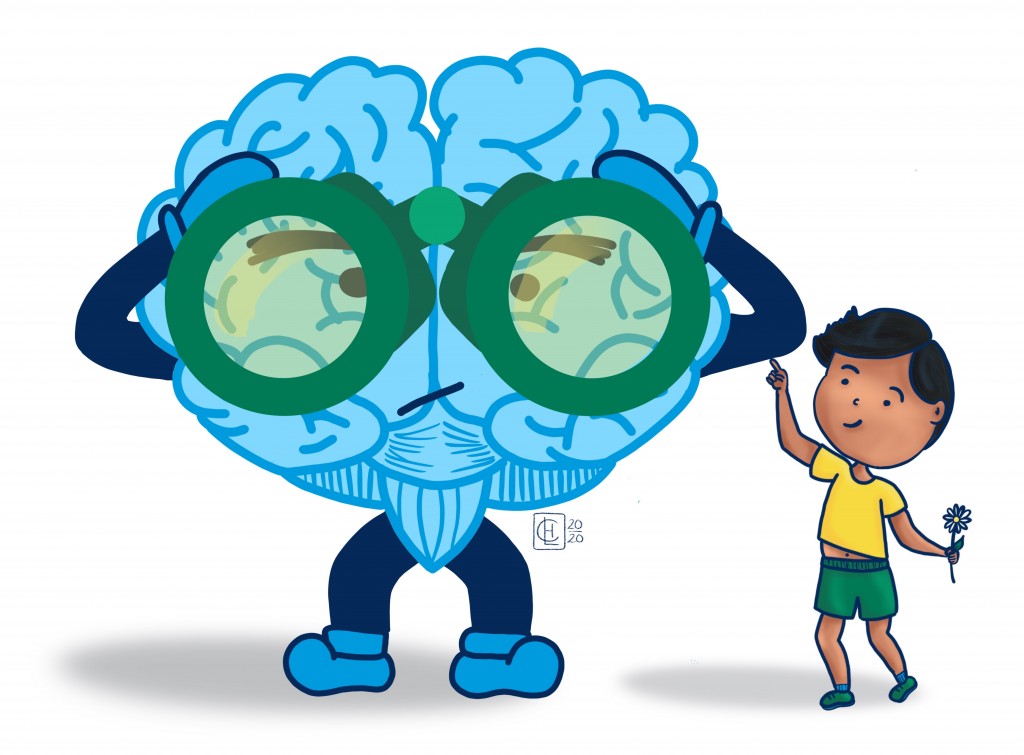
Here’s three quick and easy ways we can do this:
Turns out science agrees with the old saying “Count your blessings”
Research is increasingly showing that spending a few moments each day recalling what you’re grateful for and writing them down (or telling someone about them) can be surprisingly powerful. Gratitude can improve our mood and our sleep, it can reduce anxiety and make us feel more connected to others.
I’ve been doing this almost every day for around 5 years now and it’s one of my favourite parts of the day. It never ceases to amaze me how even on my hardest days, when I look back over all that’s happened there are always little moments I’m thankful for. Finishing the day in this way means I fall asleep on a positive note. Big, hard feelings and thoughts might still be there but the little bright spots are at the forefront, reminding me the world isn’t all bad.
If you’re struggling to think of things to be grateful for you could stick with some easy ones – food you’ve eaten, having shelter (if you did or do), or for someone you love. Where this strategy gets really effective is when it encourages you to start looking for little moments like when you sat in the sun drinking your cup of tea (even if it was only for a minute before you were interrupted!) Remember, too, you can be grateful for hard things if you learnt something from them or they reminded you of how good life normally is.
Experiment with:
So consider setting aside some time each day to think of three things you’re grateful for. Find a way to record or share them that works for you. It could be writing them in a journal, telling your partner or children or even texting a friend.
And, if you can’t think of anything, don’t worry. Alex Korb, a neuroscientist at UCLA, says in his book, The Upward Spiral, that even the act of trying to think of something is beneficial.
Put yourself in the way of joy
I have found this second part of balancing the bias often flows naturally from the first. The more I’ve started to notice things I’m grateful for, the more I’m inclined to include those things in my life rhythms and routines (more on rhythms and routines in a future post!). Start to take note of the things that bring you joy. Perhaps you get a moment of joy from your morning cup of tea or coffee. It might be the satisfaction of ticking off a To Do list or hearing your child laugh. Ingrid Fetell Lee, author of Joyful: The surprising power of ordinary things to create extraordinary happiness, keeps a little note book in her bag and jots them down when they come to her. This way, as you plan your day you can intentionally build in little happy moments. The next step is to slow your mind long enough to notice and enjoy them when they happen.
Experiment with:
So here is a 60 second challenge for you right now:
Press pause on everything you’re doing and thinking about.
Think back over today (or yesterday if today is only just getting started).
What’s one thing that made you feel warm and fuzzy so far today? How can you find ways to repeat similar experiences in the days to come? Let me know in the comments below.
- Consider what you’re consuming
It’s easy to be overwhelmed by all the awful news the media churns out. Companies capitalise on our disaster bias because they know it will get our attention, thanks to Brain’s constant, life-saving vigilance. Good news rarely sells.
Experiment with:
Put limits on when and how long you spend reading or watching the news or on social media if your feed is filled with horror, pain and fear. Seek out sources of positive news. There are now several publications and websites or social media accounts focussed solely on good news and positive reporting. See what you can find and share these happy sources with those you love.
We could all use a dose of good news.
Phew… that was a whole lot of info!
I’d encourage you to choose just one thing from this list to experiment with over the next few days. See how it goes and then try out a few more. And remember, it’s ok if they don’t all work for you – some will and some won’t. We’re all different. Please share the results of your experimenting with us over on Facebook or send us an email info(at)sfac(dot)org(dot)uk.
And don’t forget to hit the link below to download your free Nature zines! They’re the first item in our brand new Free Resource Library available to anyone who signs up to our Subscriber Club. We have lots more resources coming soon so hit the button below to access them. If you already receive our emails check your inbox (and your Spam) – there should be an email with all the details!
Happy experimenting everyone. Take care and stay safe.
* Research links for this section coming soon. It takes me a while to add them and I didn’t want to wait any longer to publish this post!
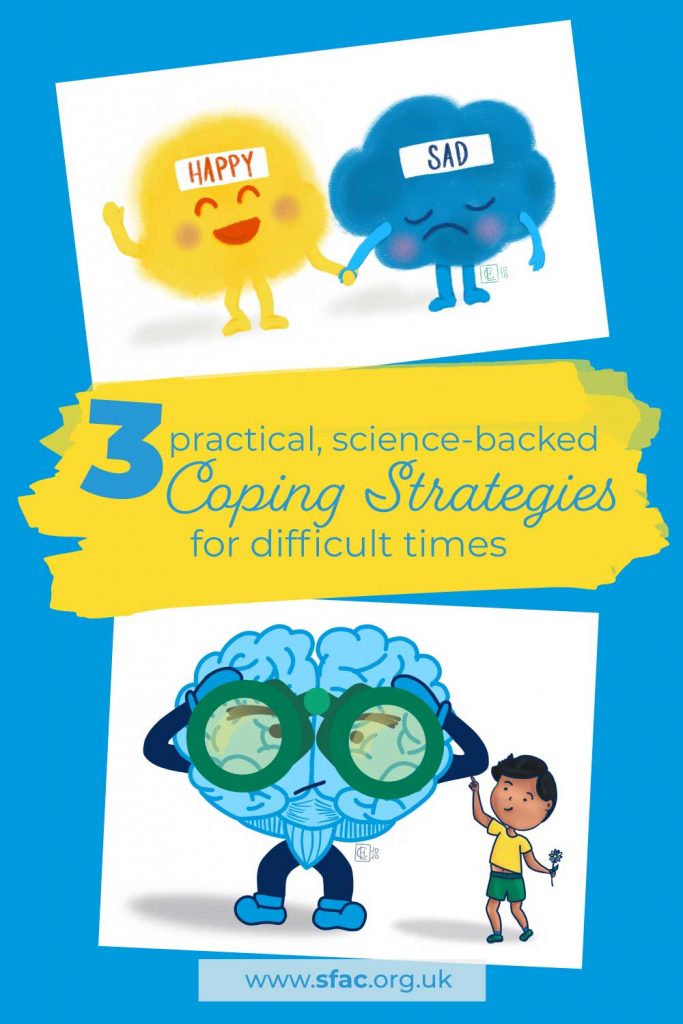

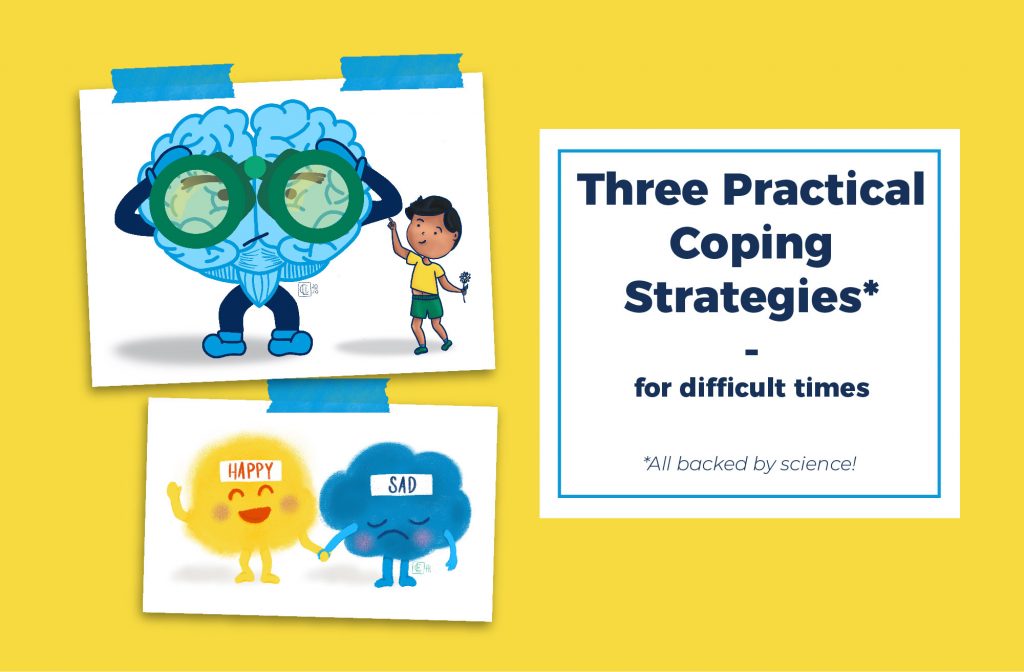
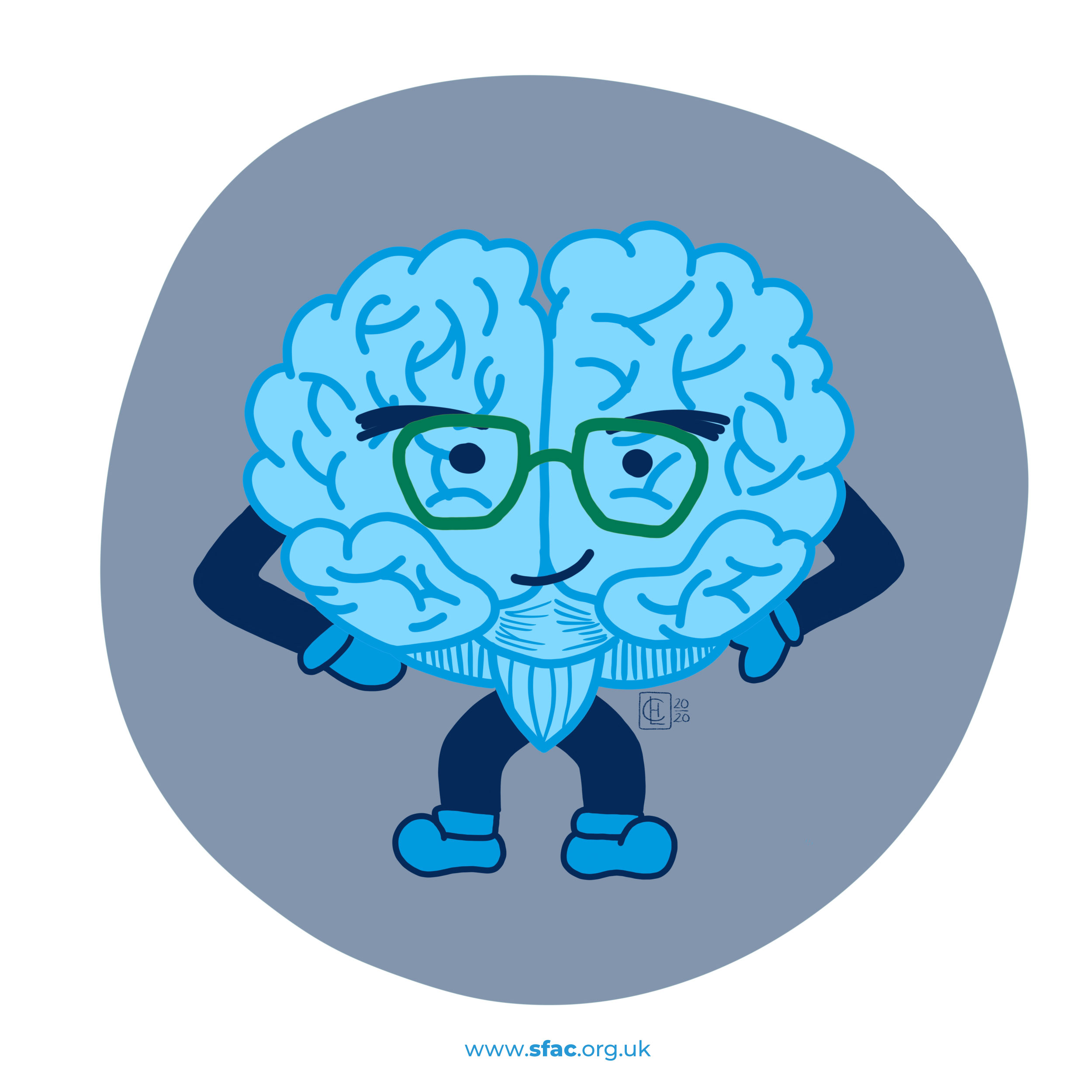
Pingback: May News In Brief - SFAC
Pingback: Tiny Triumph Awards – Sidestep the brain’s negativity bias and celebrate some wins! – SFAC Test Site